

|
Sinking of SS Athenia
The First Shots of the Battle of the Atlantic
The first shots of the Battle of the Atlantic was fired on September 3rd 1939, by Fritz Julius Lemp of U-30, a Type VIIA U-boat while on patrol in the northwestern sector of Ireland. When France and Great Britain declared war on Germany, Hitler was still hopeful of a diplomatic resolution. He believed that he might yet be able to dissuade the Western Powers from war and to this end, he issued strict orders for U-boats to follow the Prize Regulations. Under these regulations, attacks against passenger liners were prohibited, but unfortunately, the first ship that was sunk by a U-boat turned out to be a passenger liner. It caused an immediate furor in both Allied and neutral circles. It appeared that Germany was in favor of conducting unrestricted submarine warfare, as it had done during the First World War which came so close to strangling the shipping lanes of Great Britain.
This chapter presents the political situation surrounding the U-boat force at the onset of war, the events that unfolded during the first sinking and the aftermath of the incident.
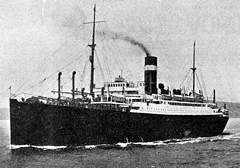
|
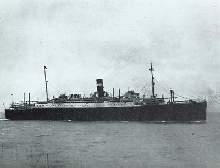
|
| The SS Athenia, a 13,580 ton ocean liner of the Donaldson line. | |
Late that afternoon on September 3rd 1939, Oberleutnant Lemp in U-30 was on patrol about 250 miles northwest of Ireland, about 60 miles south of Rockall banks - a barren sixty-three foot rock projecting upwards from the sea. The U-30, a Type VIIA U-boat was one of the first fourteen U-boats to leave Germany in mid August when the Polish crisis seemed likely to lead to war with the Western Powers. Only a few hours ago, at 1256 hours Berlin time, that likelihood had become a reality. BdU had broadcast an urgent encoded message: “Hostilities with England effective immediately”.
On that day, when France and Great Britain declared war on Germany, Hitler was still optimistic of a diplomatic solution. He believed he might yet be able to persuade the Western Powers to accept German sovereignty in Europe, just as how the British had established colonies in Asia. If he was successful, then Poland would have been gained at a low price. To that end, he issued strict orders for the U-boat force to follow the Prize Regulations, which Germany had signed in 1936. Under the Prize rules, merchant ships had to be stopped and searched, and if found to be carrying contraband, then it could be sunk, but only after the crews had been safely evacuated in lifeboats and provisioned for. If no contraband was found, then the ship was allowed to sail on unmolested. Only warships, including troopships and vessels escorted in convoys could be sunk without warning. Attacks on passenger liners were strictly prohibited. In addition to the Prize Regulations, Hitler also forbade attacks against enemy capital ships as he did not want to further antagonize the Western Powers by dealing a humiliating blow. Believing that France, the weaker of the two allies was easier to dissuade from war, Hitler also forbade attacks against French ships unless it was in self-defense. Such was the political situation and restraints which shrouded the U-boat force at the onset of war. It would be difficult, if not almost impossible for an attacking U-boat to positively identify a ship, especially at night, and in bad weather. U-boat commanders could not assume a ship was French simply because it flew the French flag. On that basis, even attacking ships in convoys had to be approached with utmost finesse, lest an accident might occur by torpedoing a French ship.
At 1630 hours, U-30 was at the northern tip of its patrol zone when the bridge watch sighted a large ship looming in the distant horizon. U-30’s patrol zone was at Grid AM1631, which Lemp had chosen for concealment as it was out of the normal shipping lanes. Lemp made speed on the surface to close the distance, then dived for a closer periscope inspection. By 1900 hours, the two vessels had closed. Peering through his periscope, and by now in the fading light of the summer evening, Lemp observed that she was darkened and was zigzagging at high speeds in front of the U-boat. She was large enough to be a passenger liner, but passenger liners were not supposed to be blacked out or zigzagging as if they were combatant vessels. On this basis and her unusual route through Rockall banks, Lemp concluded that she must be a British Armed Merchant Cruiser, a converted passenger liner fitted with naval guns and thus fair game under the Prize Regulations.
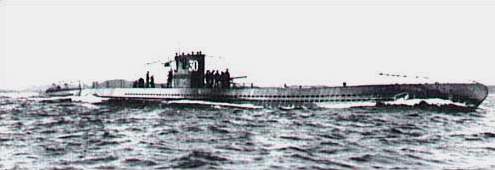
|
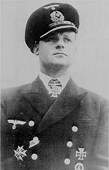
|
| The U-30, a Type VIIA U-boat seen here in this pre-war photo. When the war started, the numerals were removed from the conning tower to keep the enemy guessing. To retain their individualty, U-boat insignias were very popular. | Oberleutnant Fritz Julius Lemp, commander of U-30. |
He sent his crew to battle stations and made ready two torpedo tubes. At 1940 hours, from a submerged position, Lemp fired the first shots of the Battle of the Atlantic. The first torpedo struck the target squarely, stopping her dead in its tracks. The second had malfunctioned and ran wild. Fearing that it might circle back and endanger the boat, he dived deep to evade and resurfaced only after the danger had passed. By that time, the sky had darkened as it was about twilight. From the bridge of U-30, Lemp observed the listing target through his binoculars. It did not appear to be in danger of sinking, so he fired a third torpedo at it. It too malfunctioned and ran wild. Exasperated at the torpedo failures, Lemp edged ever closer to finish off the kill. Taking care to keep the moon at his back, as this helped conceal the approaching U-boat, Lemp was now able to clearly make out the silhouette of the darkened ship. He checked it against the boat’s copy of the Lloyd’s Register and what he discovered horrified him. After all the warnings and orders issued by his Fuehrer about attacking passenger liners, he discovered his error and learnt that he had just torpedoed the SS Athenia, a 13,580 ton British passenger liner of the Donaldson line. All doubts about the identity of the ship were removed when the operator of the Athenia radioed a distress call in plain English, providing her identity, position and a three letter code SSS, meaning she was attacked by a submarine. As it turned out, the Athenia was bound for Canada with over 1,100 passengers, including women and children and 311 Americans who were fleeing the war which had just erupted in England.
Lemp did not render any assistance to his victims and fearing that he might be recalled and relieved, he did not report the incident to BdU. He simply sailed away silently.
Fortunately for the Athenia, the seas were calm and the weather was good. She managed to remain afloat until the next morning. This allowed for an orderly evacuation of passengers and the first rescue ships of three merchants and three British destroyers showed up soon after. The loss of life from the sinking of the Athenia was contained, at only 118 although most deaths resulted from the Norwegian rescue ship Knut Nelson which clumsily chewed up a lifeboat with its propellers during the rescue.
Donitz first learnt about news of the sinking from the BBC. It came as a rude shock to him and to that of Grand Admiral Raeder. Berlin was still in the dark as Lemp had yet to report in. But after reviewing the patrol zones of all U-boats deployed in the Atlantic, Donitz had concluded correctly that Lemp in the U-30 had sunk the Athenia.
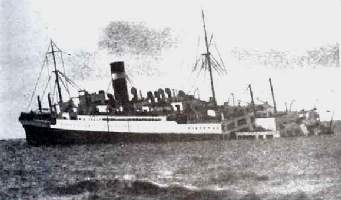
|
| The SS Athenia, sinking after a single torpedo hit from the U-30. Image thanks to Mackenzie J Gregory |
The Admiralty was quick to launch a propaganda condemning Germany for violating the Prize Regulations. It appeared that Germany intended to wage war under the same kind of unrestricted submarine warfare as it had done during the First World War. Nations around the world echoed in condemning the barbarous and inhumane sinking of the Athenia.
Hitler was furious, but he chose to categorically deny the sinking. Berlin launched their own propaganda which blamed the sinking on Great Britain. Berlin accused London of intentionally sinking the Athenia in a plot to discredit Germany and to curry favor with the United States to join the war. The propaganda minister Joseph Goebells was instructed to broadcast that no German U-boats were in that location during the incident and that no U-boats could have possibly torpedoed the Athenia. Berlin claimed that the Athenia was sunk by a British submarine or mine and blamed it as a “British Atrocity”. BdU went to as far as to falsify the log of U-30 to conceal the incident.
When Lemp finally sailed into port on September 27 1939, word had it that he was in hot soup. Berlin was still denying the sinking, but the entire U-boat Force had already known that Lemp was responsible for the sinking. For his error in judgment, Lemp could be relieved from his duties or possibly face court martial. However, Donitz took note of his outstanding first patrol. He had sunk three ships (including the Athenia), destroyed two British aircraft, demonstrated commendable humanity by fishing the two British pilots from the sea and taking them to Iceland for medical care, demonstrated competency and absolute control under a punishing depth charge attack, and brought his boat home in spite of severe battle damage. To punish a gallant U-boat commander for his mistake would send a wrong message to the men of the U-boat force. Donitz decided the best recourse was to sweep the incident under the carpet and concealed.
To prevent a repetition, Hitler placed further restrictions on U-boats. He ordered that all passenger ships are not to be attacked, even if they were escorted in a convoy.
Although the sinking was unintentional, it did much to sow “terror” of U-boats prowling in the seas of the Atlantic. The psychological impact placed Berlin in the spotlight and did little in Hitler’s plans in persuading France and Great Britain out of the war.



